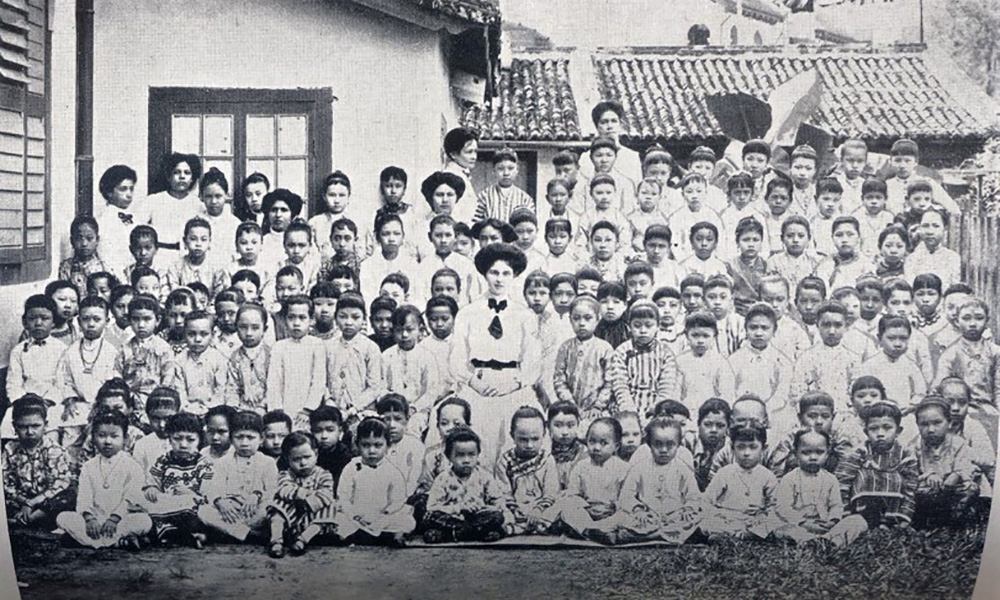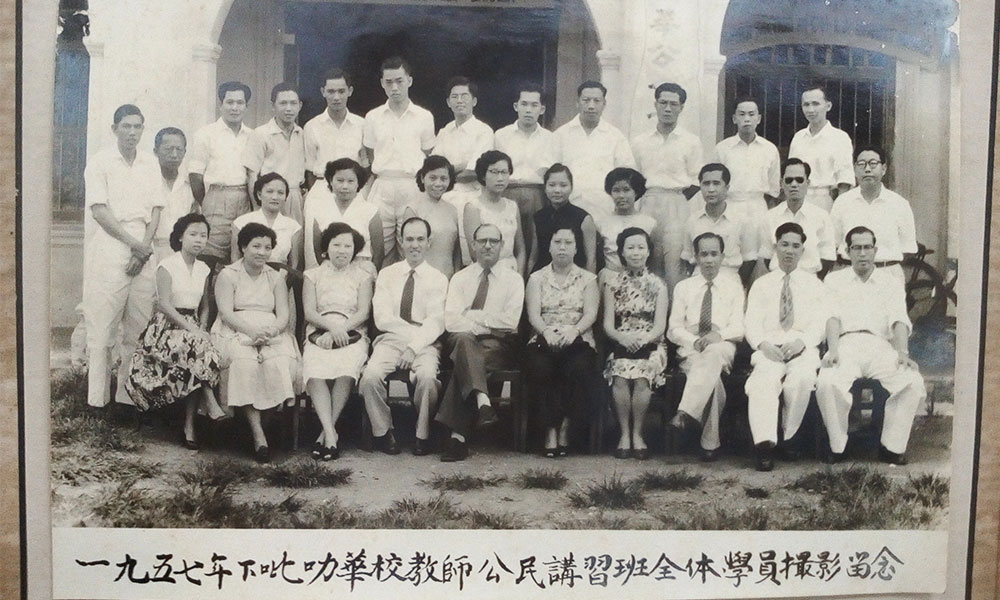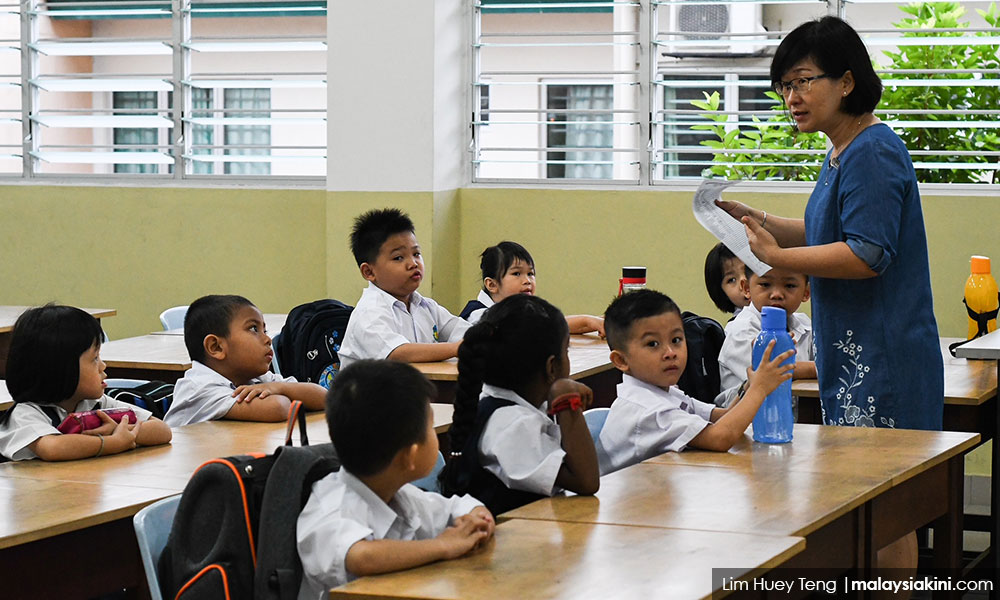COMMENT | It is a sad irony that while the Prime Minister is casting aspersions on Chinese educationists and even threatening arrests, we are celebrating 200 years of the contributions of Chinese education to this country.
When I first joined Dong Zong (the National Chinese School Committees Association) in 1983, I was impressed by the fact that the schools had been nurtured by the community since their inception in the nineteenth century. Indeed, this achievement by Chinese Malaysians is worthy of national pride for there are few, if any, comparisons of such a community-run education system in the world.
While I was touched by the scope of this achievement, I was surprised that there was no complete account of the history of these important community schools, and I was curious to know more about the periodic outbreak of controversies in the Malaysian political arena involving the Chinese schools since colonial times.
Thus, I decided to research and write “The Chinese Schools of Malaysia: A Protean Saga” to enlighten others about this heritage and to record this remarkable struggle. It was published in 1985 just as our national car, Proton Saga, was launched.
Reviewing its history, I was inspired by the fact that the Chinese school system had come about through blood, sweat, tears and the sheer political will of the Chinese community in this country to defend their mother tongue education... truly, a protean saga!
Allow me to recap the achievements of 200 years of maintaining this mother tongue education system and the significance of organisations such as Dong Zong in maintaining these schools through our history.
The first Chinese school in the peninsula was the “School of the 5th Happiness” in Penang in 1819. As Chinese settlements in Malaya grew, so did the number of Chinese-medium schools. By the 20th century, the independence of the Chinese school system was already established.
Its reliance on the Chinese community went beyond financial autonomy since the British colonial authorities “were so impressed by the high level of communal organisation among Malayan Chinese that they left them virtually alone to manage their own affairs.”
This struggle to preserve and promote the language, education and culture of the Chinese in Malaya involved the mobilisation of the whole Chinese community through the guilds and associations.

Chinese education up to secondary level established by 1939
By the eve of the Second World War, the foundation of the Chinese education system up to secondary level had been laid. Mandarin was only then recognised by the colonial government as the medium of instruction in Chinese schools. Hitherto, it had only allowed Chinese dialects to be used in the schools.
In the Unfederated Malay States such as Johore, Chinese schools were almost exclusively maintained by the Chinese community since the colonial state government did not accept any responsibility in this area.
The War Years, from 1941-1945, were the darkest years for the Chinese community in general. Chinese schools were not only suspended, but a reign of terror was also imposed on Chinese teachers and students by the Japanese occupiers.
The anti-imperialist current in the Chinese schools, coupled with the bitter war between Japanese fascism and Chinese nationalists in mainland China, explained the extreme cruelty meted out by the Japanese occupiers towards Chinese school teachers and students.
Emergency control by the colonial government
After the war, the colonial government went about to forge a "unified system of education" in an effort to do away with non-Malay-medium education. The declaration of Emergency in 1948 enabled the colonial government to control Chinese schools more easily.
In 1950, the Barnes Committee was set up to inquire into Malay vernacular education, but it went beyond its terms of reference to propose the abolition of separate vernacular schools and their replacement with a single national-type school system using only English and Malay.
At the same time, another committee (Fenn-Wu) was appointed to look into Chinese education in Malaya in 1951. In contrast to the Barnes Committee, it reported in favour of the Chinese school system, stressing that this system was consistent with the building of a Malayan national consciousness.
The Fenn-Wu Report did point out the weaknesses in the Malayan Chinese education system, such as the shortage of qualified teachers, facilities and equipment and recommended a hefty increase in government subsidy to the Chinese schools. At the time, the Chinese community still had to bear about 90 percent of the total cost of Chinese education.
The subsequent 1952 Education Ordinance adopted almost wholesale the recommendations of the Barnes Report, and only a token gesture was made to the Fenn-Wu. It laid down National Schools as the norm, while Chinese and Tamil schools were not recognised as part of the national system. Mandarin and Tamil would only be taught in the National Schools if at least 15 pupils in any standard requested it. This was the harbinger of the P.O.L. (Pupils' Own Language) classes.

The birth of the Chinese education movement
The Barnes Report brought together all the Chinese associations in opposition to it. Public meetings in associations and Chinese Assembly Halls were held to discuss the government legislation. This community response set the pattern for the future. This issue brought Jiao Zong (the National Chinese School Teachers' Association) to the fore and thenceforth, it began to play a prominent role in the affairs of the Chinese community.
In 1953, the pinnacle of the Malayan Chinese education system - Nanyang University in Singapore - was achieved. It received support of Chinese Malayans of all classes - from tycoons to trishaw riders.
Another important organisation, Dong Zong, came into being in 1954. This was a significant organisational development in the administration of the Chinese schools.
Jiao Zong and Dong Zong (better known as Dong Jiao Zong) became two associations which have received non-sectarian support of the whole Chinese community up to the present day. Thus, by independence in 1957, there were already 1,350 Chinese primary schools and 86 Chinese secondary schools in the country.
Far from being racist, Jiao Zong chairman Lim Lian Geok encouraged the promotion of all the mother tongue languages in the country, including Tamil and Malay, at least up to secondary level. Up until Independence, there were only English-medium and Chinese-medium secondary schools in Malaya.
Lim Lian Geok was asked to write Hari Raya messages in Utusan Melayu during the pre-Independence years, and he never failed to encourage the Malay community to develop their secondary education. He was at the Malacca Talks with the Tunku Abdul Rahman during the Independence struggle.
Post-independence politics around Chinese education
The issue of Chinese education spilt over into newly independent Malaya as the Razak Report was legislated in the 1957 Education Ordinance. The controversy surrounding the status of Chinese vernacular education in the national education system, and several specific issues, led to student unrest throughout the country and was reflected in the defeat of the Alliance candidate at the Menglembu by-election in November 1957.
Consequently, the 1957 Education Ordinance was reviewed by the Rahman Talib Review Committee in 1960. The Rahman Talib Report made recommendations which brought instant protest from the Chinese community.
The most important of these was that partial government aid to secondary schools would cease from Jan 1, 1962, and only full assistance would be given to schools which had converted to National-Type. Those who refused to comply would be left outside the national education system. Furthermore, public examinations could only be held in two languages: English and Malay.
The main criticism of the Talib Report was that it had violated the principles, policy and spirit of the Razak Report, as well as the constitution and was, therefore, ultra vires. The Rahman Talib Committee was only meant to be a review committee and had no jurisdiction to effect any fundamental changes to the Razak Report.
The resultant Education Act of 1961 incorporated the proposals of the Rahman Talib Report, but there was a further section 21(2) which made the existing Chinese primary schools liable to be converted to English/Malay-medium schools at the stroke of the Minister of Education's pen. Because the national-type primary schools were the life-line of all the Chinese Secondary Schools, section 21(2) of the 1961 Act represented a serious threat to the existence of the Malaysian Chinese school system as a whole.
Due to financial constraints, more than half the Chinese secondary schools in the country had little choice, but to comply with the ultimatum and they converted to English-medium "National-Type". The rest - about 14 at the time - refused to give in and hence became the first "Malaysian Independent Chinese Secondary Schools" (MICSS) in 1962.
The 1973 independent schools revival movement
After May 13, 1969, there was an upsurge in enrolment in Chinese vernacular schools, especially with the launching of the Revival Movement in 1973. This was a response to post-1969 government policies, and many English-educated Chinese parents also began to send their children to Chinese-medium schools. Before long, there were 60 MICSS in total.
Since the Nineties, the 1,285 or so Chinese primary schools and 60 Independent Chinese secondary schools have not been allowed to increase in number despite the doubling of the ethnic Chinese population compared to 1957. The increasing numbers of non-Chinese pupils in the Chinese-medium primary schools (nearly 100,000), effectively means that the shortage of Chinese schools is today rendered even more acute.

Why celebrate 200 years of Chinese education?
Celebrating 200 years of Chinese education is an opportunity to share this heritage with our Malaysian brothers and sisters and to show how this is an essentially Malaysian accomplishment. Apart from the contribution of our schools to nurturing good citizens and productive human resources for the country, the country should know the facts regarding the resources the community has contributed to subsidise Malaysian education all these 200 years. Since our Chinese schools are attracting the enrolment of Malay, Indian and other pupils numbering nearly 100,000 today, this makes such sharing all the more important.
Even as we celebrate our achievements, it gives us the occasion to take stock. Unfortunately, the status of mother tongue education is still not secure in this country even after the new Pakatan Harapan government took over in 2018. The Education Act 1996 does not give legal backing to Chinese or Tamil schools in this country. The prime minister’s latest name-calling of Chinese educationists shows that the contributions of the Chinese schools all these years are hardly appreciated.
Overcrowding is a serious problem in all the Chinese schools since the government does not allow the establishment of new Chinese schools despite the ever-increasing demand with population growth. Large classes pose a major obstacle in any attempt to provide quality education.
Class sizes exceeding fifty pupils are common in all the Chinese schools. There is also the perennial problem of teacher shortage which is compounded by the fact that the Government does not recognise the MICSS school-leaving certificate. The twenty-first century requires a quality of education that can equip our students with new skills to flexibly meet the new demands in the years ahead.
Thus, by celebrating 200 years of Chinese education in our country, we are reminding the government of the enormous contribution of our different mother tongue education systems to the cultural wealth of our society.
KUA KIA SOONG is the adviser of Suaram.
The views expressed here are those of the author/contributor and do not necessarily represent the views of Malaysiakini.


